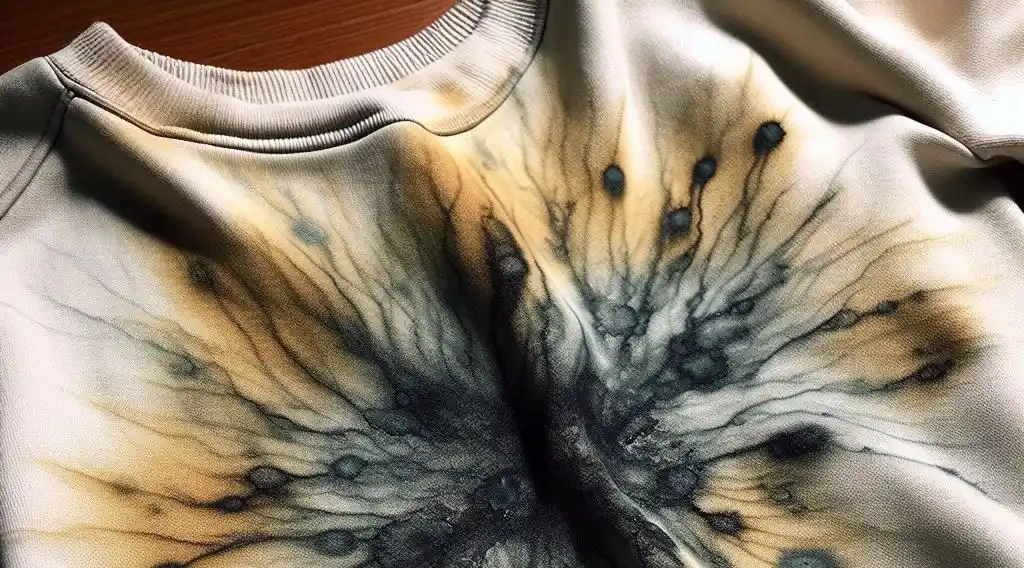How to Wash Toxins Out of Clothes And Detox Your Wardrobe
Are you concerned about pesticides, formaldehyde, and other nasty chemicals in your clothing? Most fabric contains residual toxins from manufacturing and processing. Fortunately, it’s possible to remove many of these substances by laundering and caring for items properly. Read on to discover effective techniques for detoxing your wardrobe! This comprehensive guide will cover how to wash toxins out of clothes.
Table of Contents
Why Should You Wash Out Toxins and Detox Your Closet?
The clothing industry utilizes thousands of chemicals and dyes during production. Traces inevitably remain on finished garments, which we absorb through skin contact. Exposure over the years can negatively impact health. Washing toxins out keeps your wardrobe fresh and avoids long-term risks.
Benefits include:
- Removes pesticide residues from agricultural chemicals like fertilizers and insecticides
- Eliminates free formaldehyde used for wrinkle-resistant treatments
- Gets rid of heavy metals like lead from synthetic dyes and pigments
- Minimizes volatile organic compounds (VOCs) in stains and fabric softeners
- Reduces odor and skin irritation from chemical residues
- Prolongs the lifespan of clothing by preventing the buildup of toxins
As an extra advantage, properly washing clothes saves water and energy versus discarding slightly contaminated items.
How Your Clothes Get Contaminated in the First Place
Toxins enter our clothing from various sources:
Pesticides and Insecticides
Conventional cotton utilizes enormous quantities of pesticides – up to 27% of total use globally. These chemicals leave residues on cotton fiber that transfer onto clothing.
People working in pesticide-soiled environments unknowingly track residues home on apparel as well.
Formaldehyde Resins
The textile industry relies on formaldehyde-based resins to impart creases and prevent wrinkling in fabrics like rayon and cotton. Unless properly washed out, formaldehyde particles exist in tiny spaces between cloth fibers.
Heavy Metals
Certain synthetic dyes and pigments contain small amounts of lead, cadmium, and other dangerous heavy metals. These get embedded into the fabric during dyeing and printing.
Volatile Organic Compounds (VOCs)
Common stain-resistant chemicals and fabric softeners utilize VOCs for effectiveness. These vaporize easily from clothing and have harmful health consequences.
How to Wash Toxins Out of Clothes: Solving it

Our clothes are our second skin, but what if they’re actually harboring harmful chemicals? New clothes often come coated in residues from processing and dyeing, while everyday wear exposes them to pollutants and sweat. But fear not, fashion mavens! Detoxing your wardrobe is easier than you think. Here’s how to wash toxins out of clothes and embrace a cleaner, healthier closet:
Pre-Wash Prep:
- Air it out: Hang your new clothes outdoors or in a well-ventilated room for 24-48 hours. This allows chemicals to “off-gas” and dissipate into the air.
- Read labels: Check for harmful substances like formaldehyde, lead, and phthalates. Consider brands that prioritize organic materials and sustainable practices.
- Separate by fabric: Group clothes by similar care instructions and fabric types (delicates, towels, etc.) to avoid color bleeding or shrinkage.
Washing Away Toxins:
- Skip the harsh stuff: Ditch synthetic detergents and fabric softeners loaded with chemicals. Opt for natural alternatives like plant-based detergents, baking soda, or white vinegar.
- Hot or cold? Follow fabric care instructions, but generally, hot water opens fabric pores to release dirt and residues, while cold water preserves colors and delicates.
- Boost the power: Add a half cup of baking soda or white vinegar to your wash for extra cleaning power and odor neutralization.
- Double rinse: Run an extra rinse cycle to ensure all cleaning agents are removed, especially for sensitive skin.
Beyond the Wash:
- Sun therapy: Dry your clothes outdoors whenever possible. Sunlight naturally bleaches and disinfects, further neutralizing toxins.
- Skip the dryer sheets: Those fragrant dryer sheets are full of chemicals. Use wool dryer balls for a natural anti-static effect and a touch of essential oil scent.
- Store wisely: Avoid damp or plastic storage that traps moisture and encourages mold growth. Opt for breathable cotton bags or cedar hangers for natural pest control.
Detox Your Mindset:
- Buy less, choose wisely: Invest in quality, natural-fiber clothes built to last. This reduces overall chemical exposure and promotes sustainability.
- Embrace vintage: Second-hand clothes have already been off-gassed and often lack harmful chemicals. Plus, it’s a great way to find unique treasures!
- Wash regularly: Don’t let dirty laundry pile up. Regular washing removes grime and prevents toxins from accumulating.
By following these simple tips, you can detox your wardrobe and embrace a healthier relationship with your clothes. Remember, a clean closet is a happy closet and one that’s kinder to your skin and the planet!
Bonus tips:
- For heavily stained or odorous clothes, consider a pre-soak with natural stain removers like lemon juice or baking soda paste.
- Invest in a water filter for your washing machine to reduce overall chemical exposure
- Remember, the best way to avoid toxins is to choose natural fibers like organic cotton, linen, and wool.
Step #1: Check Clothing Labels and Choose Safer Fabrics
Start enhancing your closet’s safety by examining clothing labels and purchasing apparel made from organic, eco-friendly materials not treated with toxic chemicals.
Seek GOTS or OEKO-TEX Certified Items
Searching for specific textile certifications helps identify less hazardous products.
The Global Organic Textile Standard (GOTS) guarantees clothing made from over 95% organic fiber. GOTS prohibits use of toxic bleaches, heavy metals, and formaldehyde while meeting strict ecological criteria.
Similarly, OEKO-TEX Standard 100 certification means textiles contain no harmful levels of toxic substances and skin irritants. OEKO-TEX tests for regulated chemicals plus banned pesticides, chlorophenols, and carcinogenic dyestuffs.
Choose Organic Fabrics Like Cotton, Lyocell, and Linen
Seeking out apparel made from materials like organic cotton, Tencel lyocell, linen, and hemp avoids pesticide residues and excessive chemical processing.
Avoid Synthetic Fabrics When Possible
Conventional polyester, acrylic, nylon, and rayon textiles harbor higher levels of dye substances with heavy metals and VOC finishes for stain protection. Opt for organic varieties instead.
Step #2: Wash New Clothing Several Times Before Wearing

Brand-new garments fresh from factories contain the highest levels of chemical toxins.
Help diminish residues by laundering items multiple times before ever putting them on your body. Washing WITH detergent helps dissolve and rinse away lingering dyestuff, formaldehyde, pesticides, and VOCs.
General guidelines include:
- Machine wash and dry new clothes at LEAST 3-5 times before wearing
- Hand wash delicates 2-3 times prior to donning
- Use hot water washes if safe for fabric type
- Wash darks separately to prevent color bleeding
- Line dry when possible to facilitate toxin removal
This process helps considerably reduce unwanted chemical contamination.
Step #3: Use Detergent, Baking Soda, and Vinegar For Laundry
Using specific ingredients during washing enhances the removal of toxins from fabrics.
Laundry Detergent
Washing clothing in detergent solution emulsifies oily chemical residues trapped on fabric which then rinses away with water.
Choose an eco-friendly, plant-based variety free of dyes, synthetic perfumes, and optical brighteners. Standard commercial brands contain these extra toxins you don’t want transferring back onto clothing.
Baking Soda
Alkaline baking soda helps saponify (dissolve) residues of fabric finishes, pesticides, flame retardants, and formaldehyde compounds.
Add 1 cup to each laundry load along with eco detergent to lift toxins from cloth.
White Vinegar
Acidic white vinegar acts as a fabric softener and helps remove detergent residue, bacteria, and odor from laundry. The vinegar smell dissipates as fabrics dry.
Pour 1 cup into the fabric softener compartment or rinse cycle to eliminate VOC-based dryer sheets and neutralize alkalinity.
Step #4: Use Non-Toxic Laundry Enhancers
Avoid conventional stain removers, fabric softeners, and dryer sheets. These impart additional chemical toxins plus leave oily residues attracting dirt. Seek out safer, eco-friendly alternatives instead.
Oxygen Bleach
Non-chlorine oxygen bleaches made from sodium percarbonate help lift stains without adding toxins. Brands like OxiClean and Biokleen Oxygen Bleach Plus work well.
Essential Oils
Using a few drops of lemon, lavender, eucalyptus, or tea tree oil in the wash softens fabrics naturally with antioxidant and antibacterial benefits.
Wool Dryer Balls
Reusable wool or plastic dryer balls impart fabric softening and shorten drying time sans chemicals. These also help decrease static and wrinkling.
Step #5: Hand Wash Delicates With Care
Many clothing items require gentle hand washing to avoid damage from agitation and strong detergents. Take special care to use non-toxic ingredients for these.
Mild Liquid Castile Soap
Unscented, glycerin-based liquid castile soap offers an ultra-mild, versatile cleaner perfect for delicates. Most brands derive from coconut, olive, or other plant oils.
Distilled White Vinegar
As mentioned, white vinegar is an effective fabric softener while removing residues. Triple-distilled varieties work well for hand washables.
Essential Oil Blends
Customize the scent by adding several drops of gentle oils like neroli, Roman chamomile, rose otto, lavender, or clary sage to wash water.
Step #6: Use Proper Drying Methods
To facilitate toxin removal, dry fabrics use methods appropriate for each clothing type.
Line or Flat Drying
Natural drying with sunlight and fresh air helps remove chemical buildup from cloth fibers.
- Hang delicate synthetic fabrics out of direct sun to prevent fading
- Lay sweaters flat on a towel or mesh rack
- Air dry hand-washed items completely before storing
Medium Dryer Heat
When machine-drying clothes, use medium-level heat. Excessive temperatures cause premature wear. Clean the lint filter before each load.
For added safety, enclose clothing in mesh bags before machine drying. This prevents picking up chemical residues from interior dryer surfaces.
Step #7: Remove Odors and Refresh Stored Clothing
Off-gassing from plastic tubs and closet interiors often triggers unpleasant smells on stored apparel. Mustiness also develops if moisture gets trapped.
Refresh garments and rid of unwanted stenches using these methods before wearing items again:
Activated Charcoal
Activated charcoal absorbs and neutralizes strong odors incredibly well. Place small pouches alongside stored clothes or hang larger bags inside closets.
White Vinegar
Mist clothing lightly with distilled white vinegar before storing. The acetic acid kills mildew and neutralizes compounds causing smells.
Essential Oils
Cedarwood, lemon, lemongrass, thyme oil, and other antimicrobial essences deter odor buildup when applied to garments.
Sunlight
If weather allows, hang previously stored moldy, musty, or smelly clothes outdoors in direct sunlight for 6-8 hours. UV rays and fresh air cure most odor issues.
Step #8: Discard Unfixable Clothing and Shop Smart Moving Forward
Sometimes clothing remains contaminated despite your best efforts. Know when to let go and alter future purchases for cleaner living.
Toss Irredeemable Items
Clothing with stubborn stains containing dry cleaning chemicals or pieces that still irritate skin after multiple careful washings may need to be discarded. Synthetic blends often retain more toxins than natural fabrics.
Buy Fewer Clothes
Commit to responsible consumption – buy less apparel overall but choose high-quality, sustainable varieties designed and produced in ethical ways. Consider costs beyond price tags when shopping.
Support Organic Brands
Search out clothing companies transparent about production methods and supply chains. The Organic Trade Association provides useful brand guides. Upscale lines like Stewart+Brown and every day retailers like Bgreen Apparel offer stylish, non-toxic goods that are gentler for both you and the planet.
Conclusion: Caring For Your Clothes Helps YOU
Detoxing fabrics takes a bit more effort yet generates tangible personal benefits. Washing out chemical residues promotes better skin health, reduces allergy symptoms and ensures safety for ultra-sensitive groups like children, expecting mothers, and those with compromised immunity.
Implementing even a few of these tips goes a long way towards lowering lifetime toxin exposure from clothing while preserving Earth’s precious resources as an added perk. Small actions render massive positive change!
Here’s a quick recap of the top strategies covered:
✔️ Wash brand new clothing multiple times before first wear
✔️ Choose apparel made from organic textiles (GOTS certified)
✔️ Wash clothes regularly in non-toxic detergent plus baking soda and vinegar
✔️ Use only eco-friendly laundry products like essential oils and oxygen bleach
✔️ Hand wash delicates carefully with castile soap and vinegar
✔️ Fully line dry clothing when possible
✔️ Discard items that won’t detoxify after repeated washing
✔️ Purchase fewer garments overall but choose sustainable fabrics/brands
Now that you know how to wash toxins out of everyday clothes and refresh your closet, share the knowledge by posting this article to your own blog or social channels. The small step of passing on solutions helps friends remove nasty chemicals from their apparel too!
5 FAQs about Washing Toxins Out of Clothes:
1. What kinds of toxins are we talking about?
New clothes can contain residues from processing and dyeing, including formaldehyde, lead, and phthalates. These chemicals can irritate the skin, disrupt hormones, and contribute to respiratory problems. Over time, sweat and everyday pollutants can also build up on clothes, further adding to the “toxin load.”
2. Can you really “wash out” all the toxins?
Completely removing all toxins from clothes isn’t always possible, but you can significantly reduce their presence. Following washing tips like using natural detergents, baking soda, vinegar, and double rinsing helps significantly. Pre-washing new clothes and choosing natural fibers like organic cotton and linen also minimizes exposure.
3. What are the best natural alternatives to harsh detergents and fabric softeners?
Plant-based detergents made from coconut or rice bran are excellent options. For extra cleaning power and odor neutralization, add half a cup of baking soda or white vinegar to your wash. White vinegar can also replace fabric softener naturally. Wool dryer balls provide a gentle anti-static effect without relying on chemicals.
4. How important is drying and storage for reducing toxins?
Sun-drying clothes outdoors naturally bleaches and disinfects, further reducing toxins. Skip dryer sheets and use wool dryer balls instead. Store clothes in breathable cotton bags or cedar hangers to avoid dampness and prevent mold growth.
5. Are there any specific tips for dealing with heavily stained or odorous clothes?
Pre-soak heavily stained clothes with natural stain removers like lemon juice or baking soda paste. For odors, vinegar or a solution of vodka and water can be used as pre-treatments. Remember to always test any pre-treatment on an inconspicuous area of the fabric first.
By following these tips and making conscious choices about your clothing and cleaning products, you can significantly reduce your exposure to toxins and create a cleaner, healthier wardrobe.








